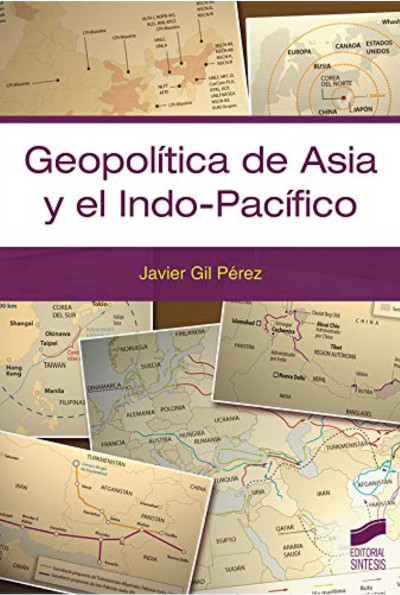In the picture
Cover of Javier Gil Pérez's book 'Geopolitics of Asia and the Indo-Pacific' (Madrid: Síntesis, 2020) 194 pages
Asia and the Indo-Pacific is one of the world's most relevant regions, of particular interest in the context of the current International Office . More and more scholars and analysts are attracted to the emerging region, especially around cases of high global relevance such as China's rise in the international hierarchy. Here, Javier Gil Pérez's Geopolitics of Asia and the Indo-Pacific excels in highlighting and analysing the region's main geopolitical phenomena through a dozen chapters dedicated to specific national contexts, such as the Chinese awakening or the emergence of India, and a final, thematic chapter focusing on the impact of the Islamic State in Southeast Asia.
Throughout the book, the author manages to explore highly relevant geopolitical vectors, including the traditionally crucial role of physical geography, such as rivers, mountain ranges and deserts that link and disunite the region; he also addresses emerging issues such as China's project One Belt One Road and its extensive trade routes that will link Eurasia, Japan's demographic crisis or the challenges of rising water levels in Bangladesh. The effective use of maps and explanatory graphs throughout the book financial aid to understand geopolitical aspects of the region; they are especially useful for phenomena related to physical and human geography.
The book covers country by country, without, however, diluting in this continental context the geographical giant that immediately comes to mind when thinking about Asia's emergence on the international stage: the Middle Kingdom, China. The book analyses China's main geopolitical variables such as its vast coastline, linguistic diversity and population distribution, and devotes space to the historical processes necessary to understand today's China, including the transformation from imperial to communist China and Deng Xiaoping's reforms. He also delves into areas adjacent to the Chinese heartland that present major problems in his diary, such as the Tibetan plateau, the autonomous region of Xinjiang and the main wound left by the civil war: Taiwan. The author also makes reference letter to Chinese efforts to rise to global power, including the construction of artificial islands in the South China Sea or the previously mentioned One Belt One Road.
The style and structure of this first chapter on China - initial study of the traditional geographical factors, examination of the historical context, assessment of areas of tension if they are found, and final consideration of phenomena at development and future steps to be taken - mark the way in which Gil Pérez analyses the contexts of the other countries included. Thus, he explores the geopolitics of Japan, the Koreas, India, Indonesia, Kazakhstan, Afghanistan, Pakistan, Bangladesh, Thailand and Myanmar. Australia stands out as the only exception to this model analysis, as its chapter is more succinct, focusing particularly on its main geographical factors and the crossroads at which it finds itself due to its external dependence on issues such as securing its sea lanes.
It is important to stress that Gil Pérez's work is not a specific study of the geopolitical context of any particular country or phenomenon, but a general overview of the region. As such, it may be of real interest to those who need this context in order to subsequently investigate more deeply into a particular case. Furthermore, although the geopolitical context of the region is best understood when analysed as a whole, the chapters of the book are units that can be understood and analysed individually. Therefore, it also serves as a useful guide in terms of making specific observations if one is only interested in one of the countries studied.
Another interesting aspect of the work of Geopolitics of Asia and the Indo-Pacific and other similar works is that they disprove the idea that the continent is a unitary and monolithic thing. In-depth and effective analyses of the region have to take into account that the economic, social and political emergence we see in some of its countries, such as China and India, does not reflect the reality of the region as a whole. Here, the country-by-country programs of study allows us to see these dissimilar cases with greater specificity.
Reading, reviewing and sharing publications such as these is necessary if we are to cultivate Spanish academic and analytical communities that develop an indigenous and relevant research concerning Asia and the Indo-Pacific. This is of crucial importance considering the aforementioned emergence of several important actors in the region and especially China's unforgettable rise to international prominence. However, the success of books such as Geopolitics of Asia and the Indo-Pacific also depends on factors outside the hands of analysts, including the commitment of publishers to embrace this subject of productions and encourage their quality, as well as the existence of a public that actively wishes to engage in these debates and analyses.

